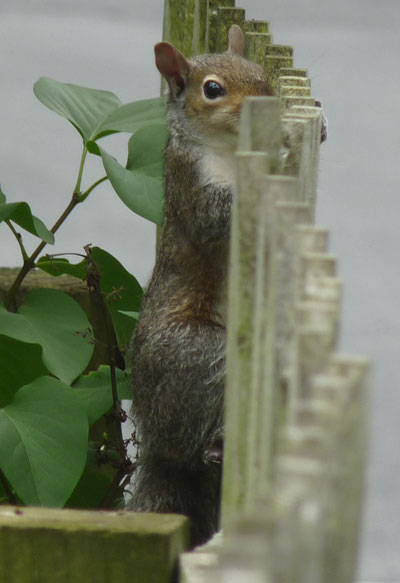 It was a beautiful morning so Deborah and I headed out early for a walk in the nearby Riverview Cemetery. We regularly see bluebirds up there flying in and out of the wooded edges and historically have spotted the first robins of the late winter and the transient flocks of migrating spring warblers roosting up in the tall red cedars on the hillside that looks over the Kiski River. Walking past the cedars this morning I saw something unexpected climbing down an old sugar maple: a black “gray” squirrel.
It was a beautiful morning so Deborah and I headed out early for a walk in the nearby Riverview Cemetery. We regularly see bluebirds up there flying in and out of the wooded edges and historically have spotted the first robins of the late winter and the transient flocks of migrating spring warblers roosting up in the tall red cedars on the hillside that looks over the Kiski River. Walking past the cedars this morning I saw something unexpected climbing down an old sugar maple: a black “gray” squirrel.
I think over the years since I wrote a species page about gray squirrels for the Virtual Nature Trail, I have had more emails and questions about them than about any other local species. People are curious about their behaviors, their colorations, and especially want to know how to keep them out of their bird feeders. I used to think of them mostly as pests and as entertainment for my dog, but after doing research and closely observing them, I came to appreciate them as an interesting and incredibly successful species.
Gray squirrels are really not gray in color at all but are instead a mixture of blacks, whites and browns. Most hairs on a “gray” squirrel, in fact, are banded with all three colors but are tipped with whitish ends that generate their “gray” appearance. The back hairs of the squirrel tend to be darker and its belly hairs tend to be lighter in color. Within any population of gray squirrels lighter and darker individuals can be found. “White squirrels” or “black squirrels” may be locally favored by natural or human-generated selection forces. The undisturbed North American population of gray squirrels was, according to historical records, predominately made up of “black”, gray squirrels probably due to the effectiveness of the black coloration as an aid in hiding from overflying avian predators such as hawks or owls. The black squirrel, however, was very clearly outlined against the light colored sky when humans hunted the squirrels from the forest floor. This human hunting pressure, apparently, favored the mixed, “gray” coloration that even today predominates in most North American populations. Early researchers indicated that the black color was a dominant allele for color, but more recent work suggests that inheritance of color in squirrels is more complex than simple Mendelian genetics.
The black, gray squirrel ran across the footpath just in front of me and disappeared into the underbrush of the surrounding woods. I will watch for him (and, hopefully, for some of his offspring!) in the months to come.
